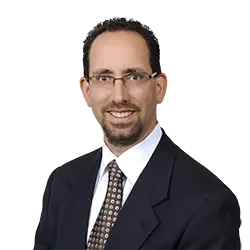ASAP
COVID-19 Supplemental Paid Sick Leave Docks in Long Beach, California
On May 19, 2020, Long Beach, California enacted a law requiring supplemental paid sick leave for COVID-19 purposes. Like San Jose, Long Beach enacted an urgency ordinance that takes effect immediately, plus an identical "regular" ordinance that will come back to the city council for a second, final reading at a future council meeting. As a result, at this precise moment, there are six emergency paid leave laws at the local level in California – three in Southern California (Long Beach, Los Angeles (City), Los Angeles (County)) and three in Northern California (Oakland, San Francisco, San Jose) – plus a statewide mandate for food sector workers covered by California Executive Order N-51-20.
The Long Beach ordinance has no current "end" date; rather, the city manager must report to the city council and mayor every 90 days, and the city council will determine whether and when the law will sail away and no longer apply.
Covered Employers & Employees: The ordinance applies to employers with 500 or more employees nationally, excluding those wholly or partly required to provide paid sick leave benefits under the federal Emergency Paid Sick Leave Act.
The ordinance covers any individual the employer employs who performs any work in Long Beach. As with predecessor local emergency paid leave ordinances in California, the law notes that, generally, California Labor Code section 2750.3, a.k.a. "AB 5," determines whether a worker is an employee or an independent contractor. Employers may exclude from the law's requirements employees who are health-care providers and emergency responders.
For companies with unionized workforces, there are two relevant provisions. Generally, a collective bargaining agreement (CBA) in place on May 19 may supersede the law's requirements if it contains COVID-19-related sick leave provisions. When the CBA expires or otherwise opens for renegotiation, to continue to be outside the law's scope, the CBA must expressly waive the law's requirements. Similarly, for CBAs without COVID-19 sick leave, the law applies unless an amendment occurs that expressly waives the law's requirements in clear and unambiguous terms. For construction industry employers, the ordinance incorporates the construction CBA exception in the non-COVID-19 statewide paid sick leave law, the Healthy Workplace Healthy Family Act of 2014. However, like other local emergency paid leave ordinances in California, it does not elaborate on how to apply this standard to the local law, e.g., state law may exempt employees if, assuming other requirements are met, the CBA was entered into before January 1, 2015, which would be at least five-and-a-half years before the Long Beach ordinance takes effect.
Amount of Leave
- Employers must provide 80 leave hours to full-time employees and, for part-time employees, an amount equal to the number of hours an employee works, on average, over a two-week period. For part-time employees, the ordinance contains a calculation employers must use to determine how many daily hours of leave employees can take, which is the daily average during the six-month period (or period of employment) preceding May 19.
- Generous Leave Exemption: Employers with a paid leave or paid time off policy that provides a minimum of 160 hours of paid leave annually are exempt from the obligation to provide supplemental paid sick leave to any employee who received such generous paid leave.
- Offset: An employer can reduce the amount of leave it must provide by the number of paid leave hours – excluding previously accrued hours – it provided an employee on or after March 4, 2020, that employees could use for reasons the law requires or in response to an employee's inability to work due to COVID-19.
- Existing Leave: Supplemental paid sick leave is in addition to pre-existing paid leave benefits. The law provides that employees need not exhaust sick leave or other leave they accrued before using supplemental paid sick leave hours. Notably, the law prohibits employers from changing any paid time off policies on or after May 19, except to provide additional paid leave.
Covered Uses: Employees can use – immediately – supplemental paid sick leave for any of the following purposes, unless they can work from home and are healthy enough to do so:
- Employee is subject to quarantine or isolation by federal, state, or local order due to COVID-19, or is caring for someone who is quarantined or isolated due to COVID-19;
- Employee is advised by a health-care provider to self-quarantine due to COVID-19 or is caring for someone who is so advised by a health-care provider;
- Employee experiences symptoms of COVID-19 and is seeking medical diagnosis;
- Employee is caring for a minor child because the child's school, daycare, or childcare provider is closed or unavailable because of COVID-19 and the employee is unable to secure a reasonable alternative caregiver.
Requesting, Verifying & Documenting Absences: Employers can require employees to follow reasonable notice procedures to use leave, but only for foreseeable absences. Although employers can require employees to identify the basis for requesting leave, they cannot require a doctor's note or other documentation to substantiate an absence.
Payment for Leave: Employers must pay leave at an employee's regular rate of pay, but may pay leave at two-thirds an employee's regular rate if an employee uses leave to care for another. The maximum value of "personal use" leave is $511 per day ($5,100 overall), and $200 per day ($2,000 overall) for "caregiver" leave. If employment ends and an employee has unused leave, employers need not cash out such leave.
Prohibitions: The law contains replacement worker, retaliation, and waiver prohibitions. Employers cannot require employees to find a replacement as a condition of approving leave. Aside from valid CBA waivers, a waiver by an employee of any or all of the law's requirements is contrary to public policy, void, and unenforceable. Employers cannot discharge, reduce in compensation or otherwise discriminate against any employee for: 1) opposing any practice the law proscribes; 2) requesting to use or actually using leave; 3) participating in proceedings related to the law; 4) seeking to enforce rights under the law by any lawful means; or 5) otherwise asserting rights under the law.
Enforcement: The ordinance does not designate an agency to interpret or enforce the law. Instead, employees' sole recourse is a private lawsuit in state court where, if they prevail, a court can award actual and punitive damages, reinstatement, reasonable attorney's fees and costs, and any other legal or equitable relief the court deems just and appropriate.
Next Steps: In less than two months, state and local officials in California have enacted seven major paid leave laws, making it challenging for employers with Golden State operations to manage ever-changing COVID-19 compliance obligations. Because the Long Beach ordinance takes effect immediately, employers should quickly consider whether and how the law (and its predecessors) affect existing policies, practices, and operations.


